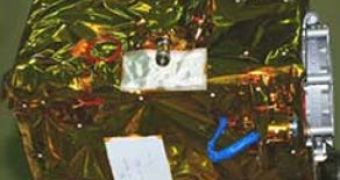The first Indian unmanned craft ever, Chandrayaan-1, has been successfully circling the Moon in a steady orbit for about two days. During the next four days, it will perform further maneuvers in order to reduce the orbit up to approximately 100 km distance from the Earth's natural satellite. Its engines were fired for 13.6 minutes (817 seconds) in order to slow down the spacecraft located a bit more than 500 km far from the Moon so that its gravity could naturally capture it, according to the Indian Space Research Organization (ISRO).
For now, the spacecraft's elliptical orbit takes it around the Moon's poles, with an apogee (the point farthest from the surface) and perigee (the point closest to the surface) measuring 7,502 km and 504 km respectively, during a period of around 11 hours. Four or five days from now, on November 14th or 15th, depending on how fast Chandrayaan-1 will successfully attain the expected low orbit, it will deploy its Moon Impact Probe (MIP).
The 35-kg heavy MIP is supposed to smash on the lunar surface after 25 minutes of flight through the atmosphere. The probe was designed in order to provide more insight on the technology needed for future smooth landing operations at fixed locations, as well as to perform scientific observations directly from the Moon's surface.
In this regard, it was equipped with three main instruments (besides the avionics and communication systems). The first is a Radar Altimeter which will record the probe's altitude and data related to the technological requirements for future landings. Another device is the Video Imaging System, which is destined to capture images of the lunar surface during the descent of the tiny (375 mm x 375 mm x 470 mm) MIP by means of its built-in analog CCD camera. The final instrument is the Mass Spectrometer, which will determine the composition of the atmosphere during the short flight before the impact.

 14 DAY TRIAL //
14 DAY TRIAL //